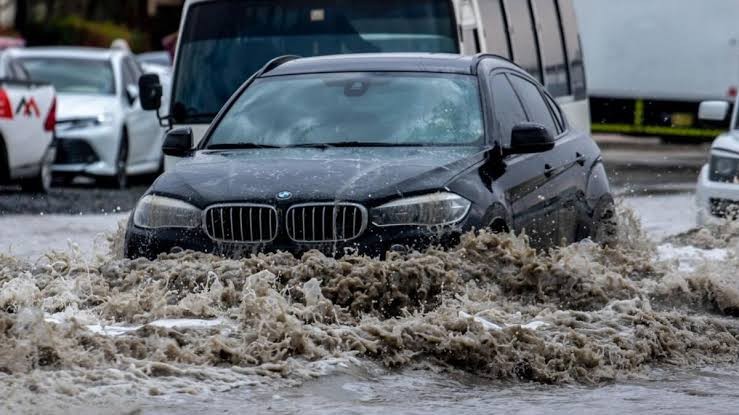Hydroplaning is a dangerous situation that can happen when you are driving on wet roads. Hydroplaning occurs when your tires lose contact with the road surface and glide on a thin layer of water. This can cause you to lose control of your car and skid or slide across the road. Hydroplaning can lead to serious accidents and injuries, especially if you are driving at high speeds or in heavy traffic.
Fortunately, hydroplaning can be prevented and recovered from by following some simple tips and steps. In this article, we will explain what causes hydroplaning, how to avoid it, and what to do if it happens to you.
What Causes Hydroplaning?
Hydroplaning is caused by a combination of factors, such as:
- The speed of your car: The faster you are driving, the more likely you are to hydroplane. This is because the faster you are driving, the less time your tires have to push the water away from the road surface and maintain traction.
- The depth of the water: The deeper the water on the road, the more likely you are to hydroplane. This is because the deeper the water, the more difficult it is for your tires to push it away and stay in contact with the road surface.
- The condition of your tires: The condition of your tires affects their ability to grip the road and prevent hydroplaning. Worn-out tires, underinflated tires, or overinflated tires can reduce the traction and the tread depth of your tires, making them more prone to hydroplaning.
- The condition of the road: The condition of the road affects the amount and the distribution of water on the road surface. Roads with poor drainage, uneven surfaces, or oil spills can increase the risk of hydroplaning, as they can create puddles, standing water, or slippery patches on the road.
How to Avoid Hydroplaning?
Hydroplaning can be avoided by following these tips:
- Slow down when driving in wet conditions. The slower you are driving, the more time your tires have to push the water away from the road surface and maintain traction. You should also avoid sudden or aggressive acceleration, deceleration, or braking, as these can cause your tires to lose traction and skid.
- Avoid driving through puddles. Puddles can be deeper than they appear and can cause your car to hydroplane. You should also avoid driving on the edges of the road, where water tends to accumulate. You should drive in the tracks of the car in front of you, as they can displace the water and create a drier path for your tires.
- Use caution when driving on roads with poor drainage. Roads with poor drainage are more likely to have puddles and standing water, which can increase the risk of hydroplaning. You should drive slowly and carefully on these roads, and avoid changing lanes or turning sharply, as these can cause your tires to lose traction and skid.
- Maintain your tires properly. You should make sure that your tires are properly inflated and have adequate tread depth. You can check the tire pressure by using a tire pressure gauge, and you can check the tread depth by using a penny or a tread depth gauge. The recommended tire pressure and tread depth for your car can be found in the owner’s manual or on the sticker inside the driver’s door. You should also inspect your tires regularly and look for any signs of damage or wear, such as cracks, bulges, cuts, or uneven tread. You should replace your tires when they are worn out or damaged.
What to Do If Your Car Hydroplanes?
If your car hydroplanes, you should do the following:
- Stay calm and avoid slamming on the brakes. Slamming on the brakes can cause your car to lock up and skid, making the situation worse. Instead, you should take your foot off the accelerator pedal and let your car slow down gradually.
- Steer in the direction of the skid. This will help you to regain control of your car and align it with the direction of travel. You should avoid oversteering or understeering, as these can cause your car to spin or swerve. You should also avoid jerking the steering wheel, as this can cause your car to lose balance and roll over.
- Once you have regained control of your car, slowly accelerate. This will help you to restore the traction and the stability of your car. You should also check your surroundings and make sure that you are safe and clear of any obstacles or hazards.
Conclusion
Hydroplaning is a serious danger that can happen when you are driving on wet roads. It can cause you to lose control of your car and skid or slide across the road. Hydroplaning can lead to serious accidents and injuries, especially if you are driving at high speeds or in heavy traffic.
However, hydroplaning can be prevented and recovered from by following the tips and steps in this article. You can avoid hydroplaning by slowing down, avoiding puddles, using caution, and maintaining your tires. You can recover from hydroplaning by staying calm, avoiding braking, steering in the direction of the skid, and slowly accelerating.
By following these tips and steps, you can ensure your safety and the safety of others on the road. You can also enjoy the benefits of driving in wet conditions, such as the fresh air, the rainbows, and the fun.

Comments (0)
Please login to join the discussion
Be the first to comment on this article!
Share your thoughts and start the discussion